Martin XB-51
In 1946 the U.S.Army Air Force (soon to be renamed into the U.S. Air Force!) released a design specification for a new attack bomber intended as a successor for the Douglas B-26 Invader. Initially Martin submitted a design for a highly modified version of the P4M-1 Mercator patrol bomber fitted with two General Electric T-110 turboprop engines.

When captured German wind tunnel data became available it became evident that swept wings would result in much better aerodynamic properties this plan was soon abandoned. Also the idea of turboprop powerplants was soon changed into jet engines.
A totally new design was submitted as Model 234 that was regarded as very futuristic at that time.
Type description
Martin’s Model 234 had a very sleek long fuselage with relative small wing with 30° sweep. Fitted with thee jet engines it would have performances that could not be met by any other existing type. Two jet engines were housed in pods on both sides of the front fuselage; a third engine was fitted in the tail with the intake in front of the vertical tail. If needed the tail engine could be shut down and the air intake could be fully closed.
Further it featured a double tandem main undercarriage wheel system under the fuselage with two small outrigger wheels on the wing tips. This layout was tested earlier on a specially modified B-26 Marauder bomber. The new Martin attack bomber had a crew of two: pilot and the operator for the navigation and weapon systems. The pilot was housed under a small and well-streamlined canopy of the same type as used on jet fighters. The system operator was seated behind the pilot and only had a small window panel above him wit an additional small circular window on the right hand side of the aircraft. Both crew members had an ejection seat. Initially the new attack bomber received the type designation XA-45 but when the ‘A’ was abandoned in the U.S.A.F. designation system this was changed into XB-51. Although some sources claim it was named ‘Panther’ the XB-51 never received any official name.

Flight testing
The U.S. Air Force ordered two XB-51 prototypes for testing with assigned serial numbers 46-685 and 4686. The first flight with no. 46-695 was made on 28 October 1949 by Martin’s chief test pilot Pat Tibbs. The second XB-51 made its first flight on 17 April 1950. Unfortunately this machine crashed on 19 May 1952 during a roll maneuver at low altitude. Eventually the B-51 was rejected in favor of the British English Electric Canberra bomber, a type that would later be license-manufactured by Martin as the B-57.

Also the first XB-51 crashed later in 1956 when it was accidentally stalled during the start. In general the XB-51 flew quite well; in particular at low altitude it flew much faster than the Canberra. However, the much lower wing loading of the B-57 in combination with a much better maneuverability and general handling qualities were decisive for the final choice of the B-57….
Technical details:
Power plant: three General Electric J47-GE-13 jet engines of 2720 kg thrust each
Dimensions: wing span 16.18 m
lenght 25.94 m
height 5.26 m
Weights: empty weight 13,420 kg
loaded weight 25,885 kg
Performances: maximum speed 1037 km/hr at sea level service ceiling 13,200 m
range 2575 km
Armament: eight 20 mm cannons in the nose and a rotating bomb bay with a total capacity of 4720 kg.
Crew: pilot and systems operator
Nico Braas
Literatuur:
-Bill Gunston, Martin’s three-jet experimental bomber, Aeroplane Monthly, September 1982
-Scott Libis, Martin XB-51, Ginter Books U.S.A. (1999)

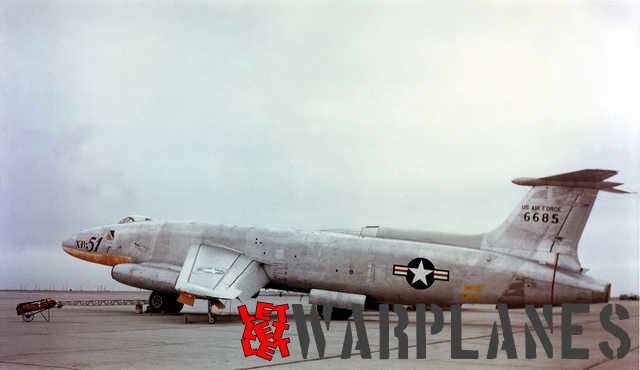
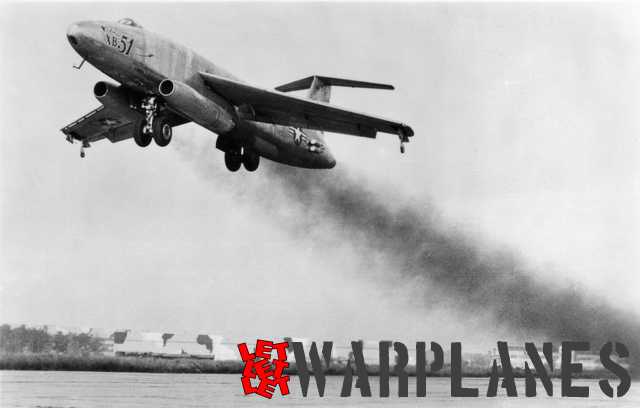
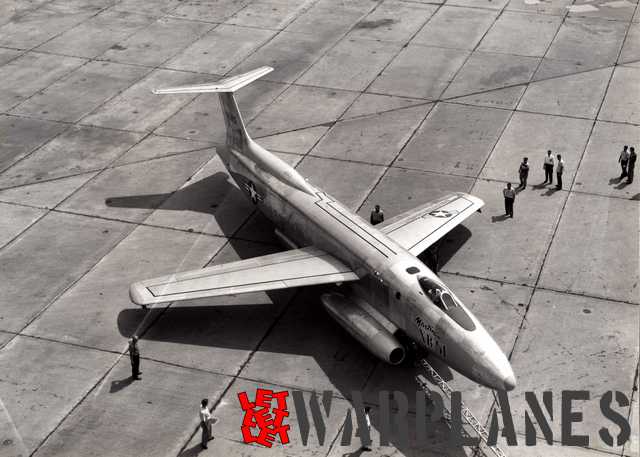
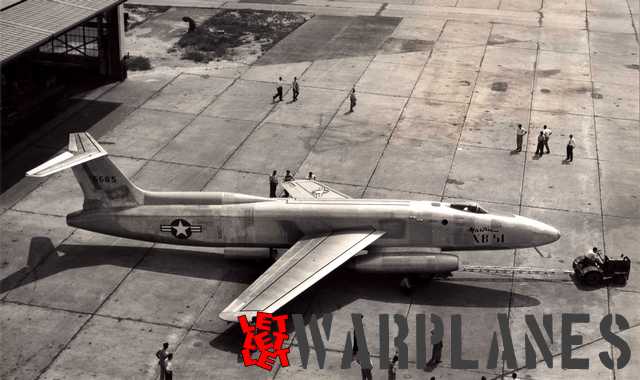
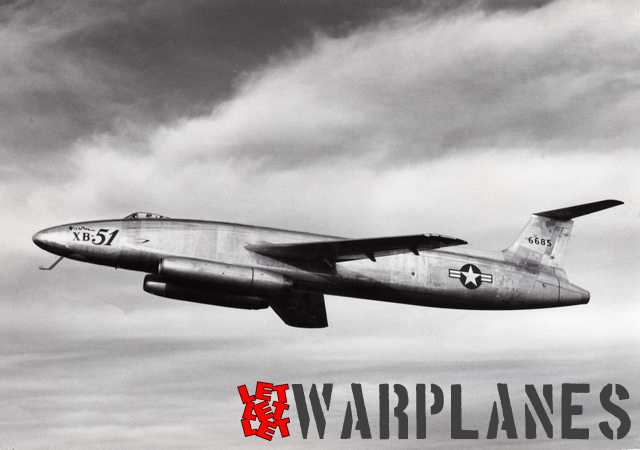
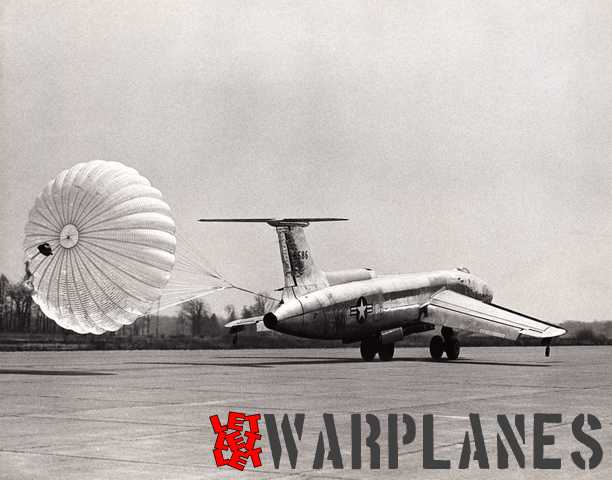
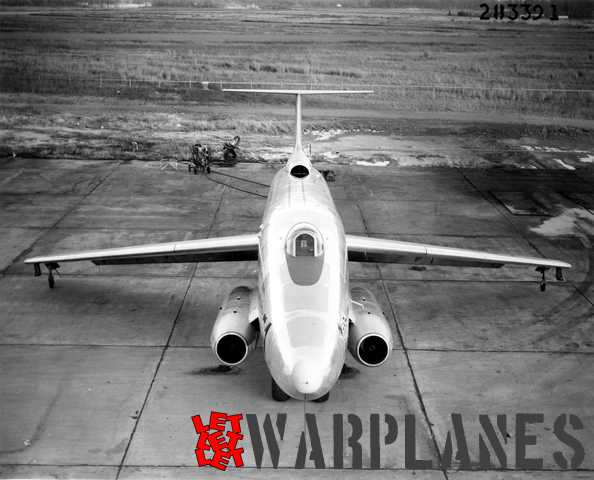
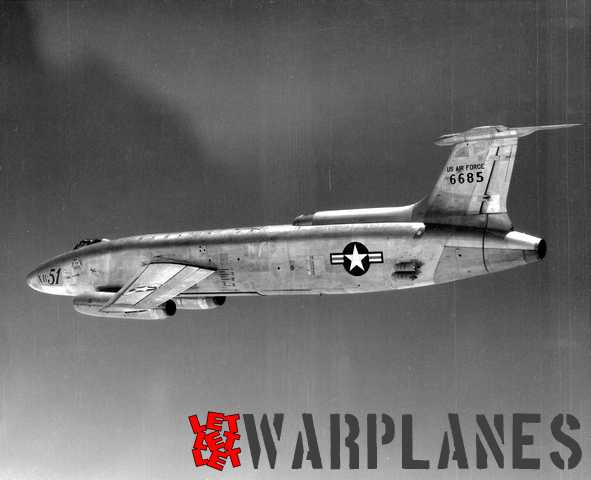
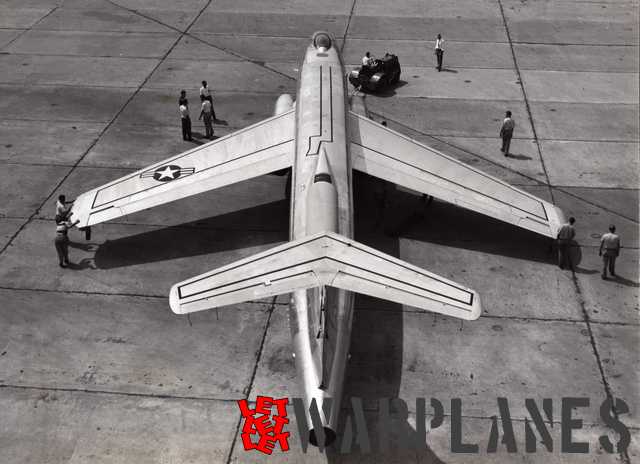
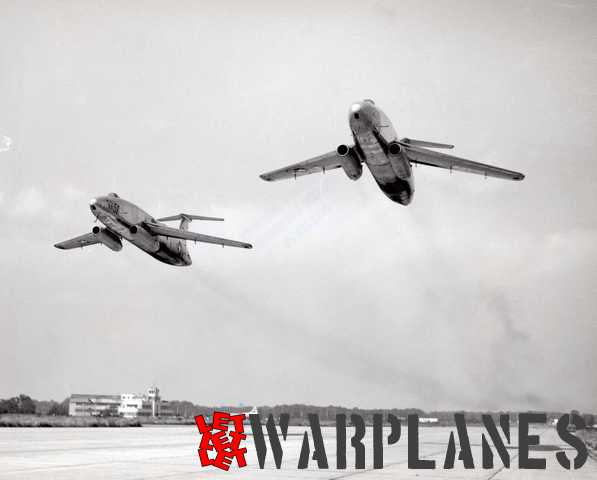
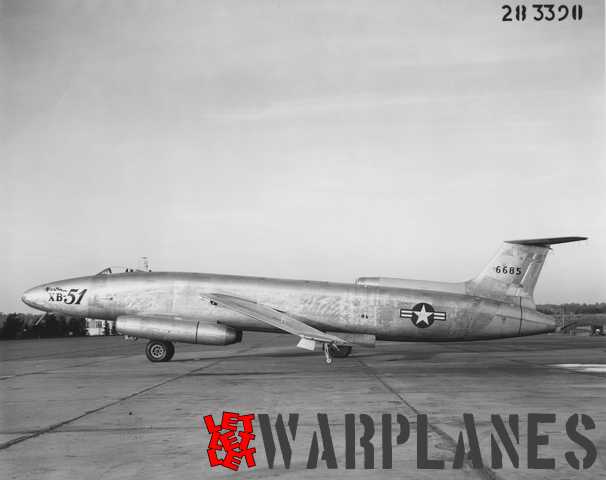
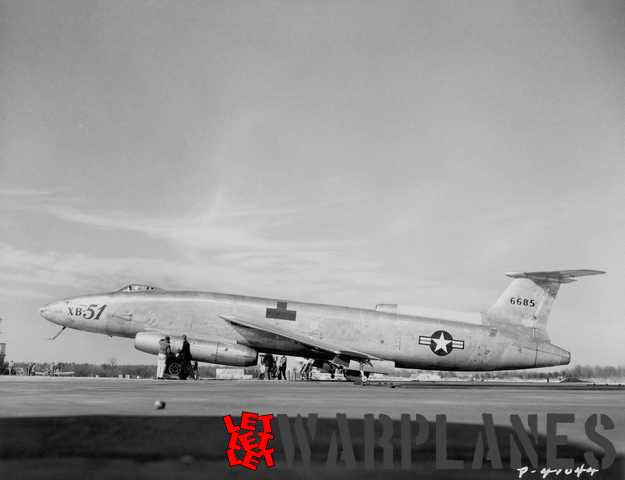
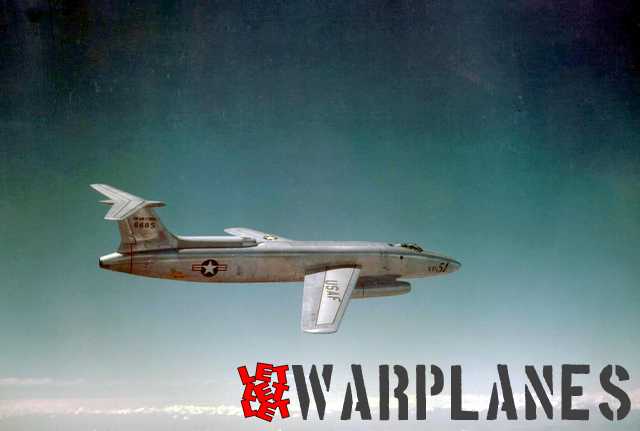
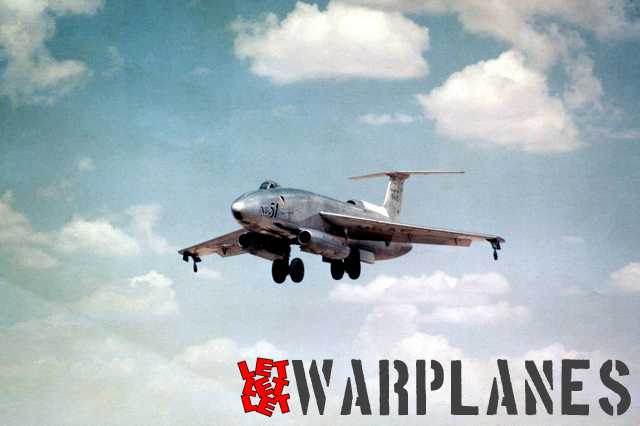
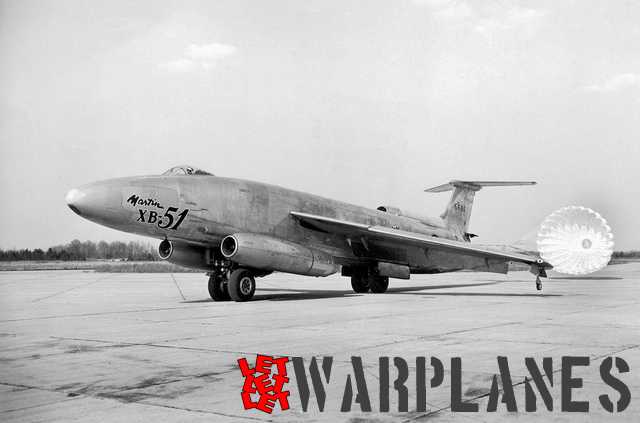
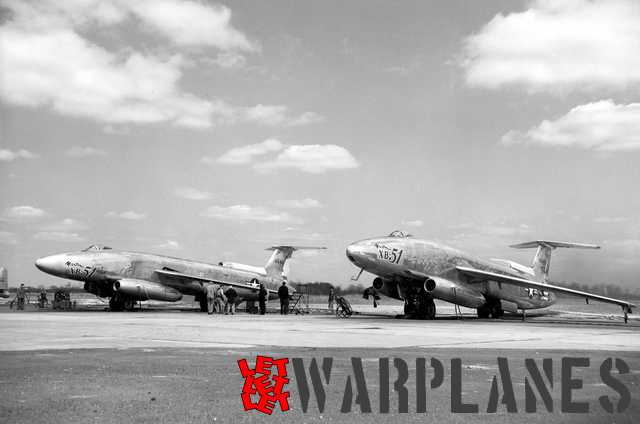
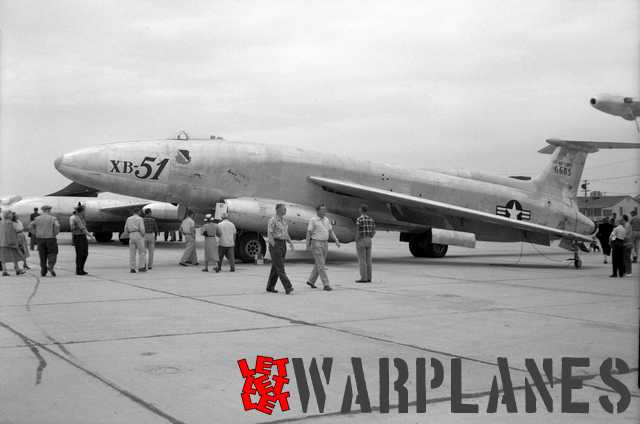
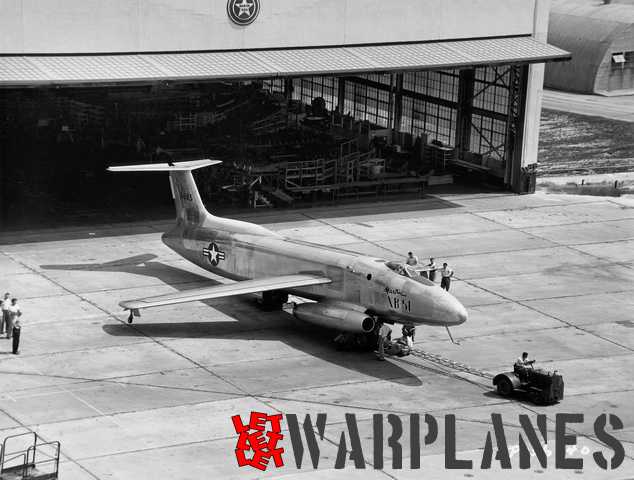
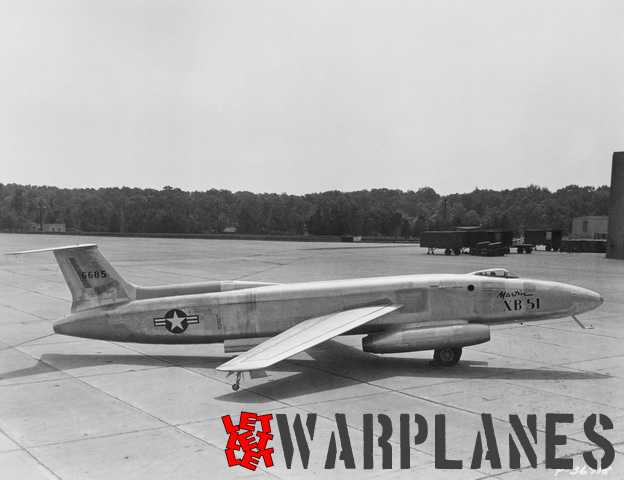
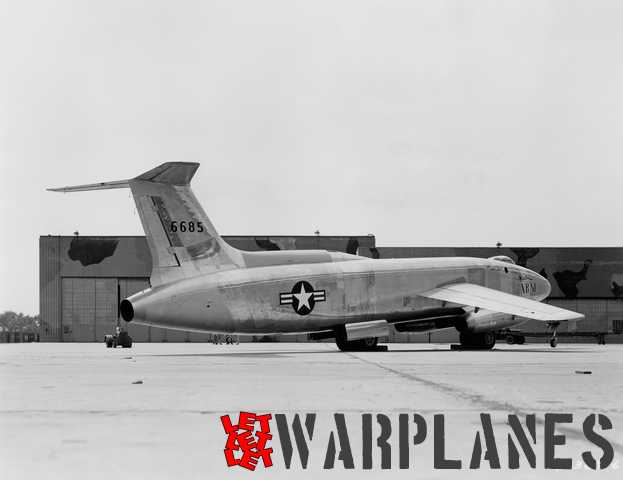
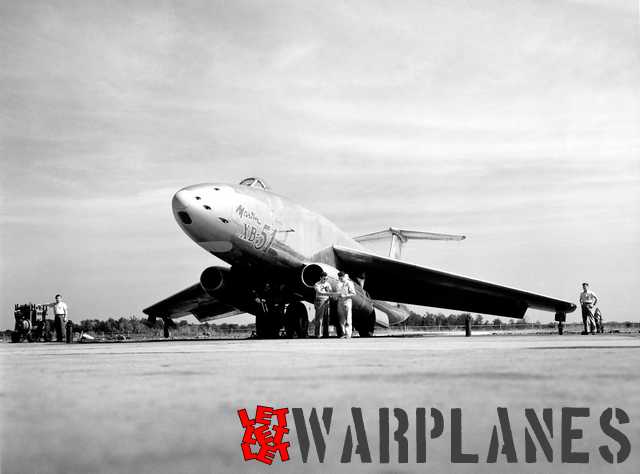






I remember William Holden and James Garner in a 1956 film about the Edwards AFB Flight Test Center. I think that the title was “Towards The Unknown”. There was a great shot of the XB-51 with an F-100 as the chase plane . Great film and story.